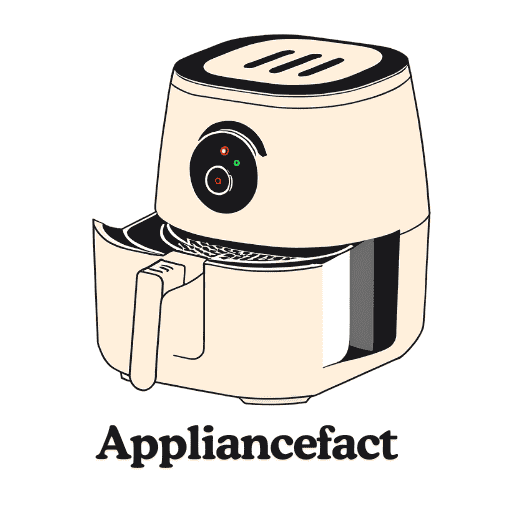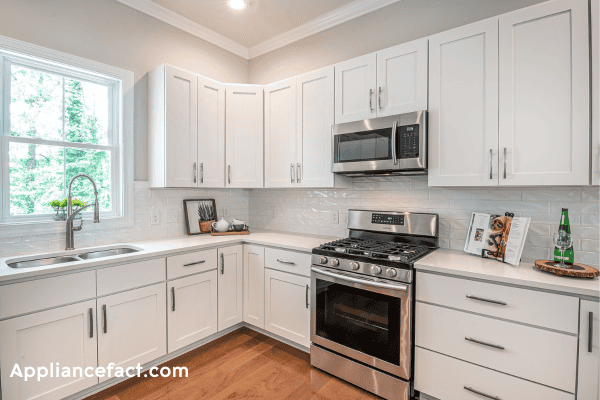Have you ever opened your cabinet after cooking only to feel a sudden burst of steam?
I once stood there, scratching my head, wondering, “How can it emit steam in a microwave built into a cabinet?” It seemed odd initially, but I looked into it and found some straightforward answers.
I’m here to share what I learned so you can protect your cabinets from damage. Stick around for simple tips and personal stories to keep your microwave and kitchen safe and dry!
Contents
Why Does a Microwave Emit Steam?
Microwaves heat food by exciting water inside. Those water molecules jump around and create heat, which turns into steam. That steam can’t just stay in your bowl, so it looks for a way out. If you’ve ever asked, “How can it emit steam in a microwave built in a cabinet?” This is the basic reason: heated water needs room to escape.
The microwave itself has vents that direct steam away from its internal parts. This vent design prevents pressure from building up inside. But it also means warm air is pushed out into your kitchen. If the cabinet is tight around the microwave, that moist air can swirl under the wood, leaving it more prone to damage.
This leads us to built-in cabinets and how they trap steam. Many cabinets lack enough space for proper airflow. Poor ventilation makes moisture linger around the microwave, causing condensation and even peeling paint. It’s like steam having a little party right where we don’t want it inside the cabinet.
Issues Caused by Steam in a Built-in Cabinet Setup
Condensation and Moisture Damage
Steam around your microwave can do more harm than you can. It seeps into the cabinet’s surface, and the paint peels or bubbles before you know it. I remember a friend calling me panicked after seeing fresh paint flake off in tiny chips. It was heartbreaking. This problem happens fast, especially when there’s a lot of steam and not enough space for it to escape.
Microwave Errors and Malfunctions
Too much moisture can also bug your microwave’s internal parts. I’ve heard of Samsung users getting a C-F0 error code when water collects on the electronics. It’s almost like the microwave says, “Help, I’m drowning!” Keeping steam away from those sensitive areas helps your microwave last longer and stops error codes.
Poor Ventilation Effects
Lingering steam can turn your kitchen into a sticky sauna. I once noticed the air felt thick, making cooking feel more like a sweaty workout. That extra moisture can hurt indoor air quality and even invite mold to the party. Good ventilation keeps things dry, safe, and pleasant for everyone cooking up a storm in your home.
How to Prevent Steam from Damaging Cabinets and Microwaves?
Ensure Proper Ventilation
Ventilation is your first line of defense. Pick a microwave that vents outside rather than one that recirculates air. Turn the fan on a minute before cooking, and leave it on after you’re done. That short extra time can keep steam from sticking around.
Modifying the Built-in Cabinet Design
Give your microwave some breathing room. Follow the manufacturer’s rules on cabinet spacing so air can move freely. If there isn’t enough space, try adding a custom spacer or trim kit. Think of it like opening a window—just a little gap can save you a lot of trouble later.
Using an External Range Hood
Some folks add a separate range hood to help pull out steam and odors. Placing it below or above the microwave can make a big difference if your kitchen gets stuffy. The downside is the extra cost and space, but in many cases, it’s worth it for the peace of mind.
Regular Maintenance Tips
Simple upkeep works wonders. Wipe the vents and keep them free of dust or grease. Check the cabinet finish now and then if you spot moisture damage, nip it in the bud with quick repairs. These small steps help keep your microwave happy and your cabinets looking good.
Conclusion
Steam escapes because it needs a place to go, but that simple fact can significantly affect your kitchen. We’ve seen how trapped steam leads to peeled paint, warped cabinets, and even those pesky microwave error codes. Focusing on better ventilation, proper spacing, and a little regular upkeep will keep your kitchen fresh and your microwave running smoothly.
The best way to protect your cabinets is to let the steam out before it settles in. Give your microwave room to breathe, use a vent fan or hood, and keep everything clean and dry. It might feel like extra work initially, but it saves you from big headaches. With these steps, you can enjoy a comfortable, clean kitchen free from steam-related troubles.

